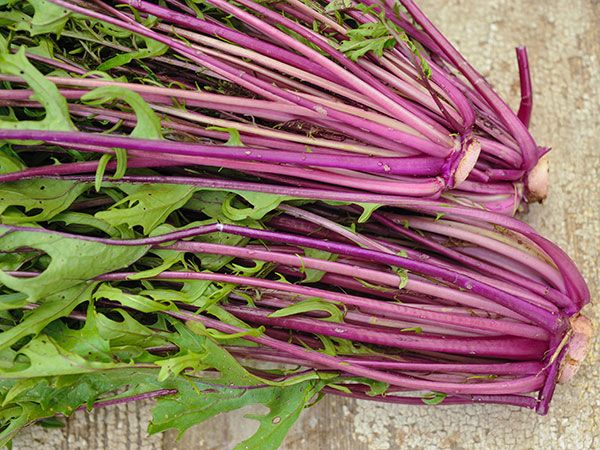Among the many varieties of mizuna, a Japanese mustard green, one stands out for its vivid coloring and exceptional flavor – the mizuna beni houshi
Mizuna beni houshi offers gardeners a mustard green with beautiful burgundy-colored foliage and a pleasantly spicy bite Here’s an in-depth look at this unique strain of mizuna
Overview of Mizuna Beni Houshi
-
Also called ‘crimson petiole’ mizuna
-
Features deep reddish-purple stems and leaf veins
-
Leaves are green with a tinge of red
-
Adds striking color to salads and dishes
-
Has a pleasant mustard-like spiciness
Mizuna beni houshi is an heirloom strain of mizuna developed in Japan. The name “beni houshi” translates to “crimson petiole” or red stem, referring to its distinct burgundy-colored stems and veins.
While the leaves are primarily green, they have a slightly ruffled appearance and take on a reddish purple tinge, especially in cooler weather. The contrast of the dark red stems and green leaves makes for an eye-catching addition to the garden and salad bowl.
Flavor Profile
The leaves of mizuna beni houshi have a pleasantly pungent, mustard-like bite similar to arugula. The flavor is spicy but not overwhelmingly strong.
The stems are crisp and juicy with a subtle sweetness that balances out the greens’ spice. Both the leaves and stems are edible and make a flavorful addition when eaten fresh in salads or sandwiches.
The unique coloring of mizuna beni houshi comes from antioxidant compounds like anthocyanins. These beneficial plant nutrients may also contribute to this variety’s enlivening flavor.
Growing Conditions
-
Thrives in cool weather
-
Tolerates heat and frost
-
Grows well in full sun to partial shade
-
Does well in containers and raised beds
A cool season crop, mizuna beni houshi grows best with air temperatures around 60-70°F. It can tolerate summer heat and frosty winter weather.
Provide full sun for the most intense leaf colors. It also grows well in light shade, especially in hot climates. The loose, well-draining soil should be kept evenly moist.
Its adaptability makes it a good choice for raised beds, containers, and in-ground gardens. For a continuous harvest, sow new seeds every 2-3 weeks.
Uses in the Kitchen
The attractive leaves and crunchy stems of mizuna beni houshi can be used:
-
Raw in salads, sandwiches and wraps
-
Added to soups and stir-fries at the end
-
Sauteed quickly in sesame oil with garlic
-
Whisked into dressings and sauces
-
Pickled for use as a condiment
-
Garnish for grains, noodles and tofu dishes
Both the leaves and stems retain their color when lightly cooked. Quickly sauteeing or adding it at the end of cooking preserves the vibrant colors.
Benefits and Nutrition
Like other mustard greens, mizuna beni houshi provides beneficial nutrients including:
-
Vitamin C, A, K
-
Calcium, potassium, iron
-
Antioxidants like anthocyanins
-
Anti-inflammatory compounds
-
Fiber, folate, riboflavin
The eye-catching pigments also signal the presence of unique plant compounds linked to antioxidative and anti-inflammatory effects.
Growing Tips
-
Sow seeds 1⁄4” deep in prepared soil
-
Water regularly to keep soil consistently moist
-
Harvest young leaves for milder flavor
-
Pick stems and mature leaves as needed
-
Remove any flowers to prolong harvest
-
Make successive plantings for continual supply
Mizuna beni houshi is easy to grow from seed. Keep the soil moist until seeds germinate in 7-10 days. Thin seedlings to 4” apart.
Harvest the young leaves when they reach 3-4” long. Regular picking encourages tender new growth. The vibrant colors and flavors peak in cool weather.
Where to Find Seeds
Mizuna beni houshi seeds can be purchased from:
-
Specialty seed shops like Baker Creek Heirloom Seeds
-
Online retailers like Amazon and Etsy
-
Local garden centers and nurseries
-
Asian grocery stores often sell the seeds
Check for listings of mizuna beni houshi, or search for “crimson mizuna” to locate this colorful strain of mustard green. The seeds keep for 3-4 years when properly stored in a cool, dry place.
With its gorgeous coloration and lively, mustardy zing, mizuna beni houshi is a unique novelty for the vegetable garden. Both ornamental and tasty, it brings excitement to salads, stir fries, and as edible garnish. For an out-of-the-ordinary mustard green, be sure to try growing mizuna beni houshi.
How to Grow Mizuna: The Leafy Green You Aren’t Growing (But Should)
FAQ
What is mizuna Beni Houshi?
What does mizuna taste like?
What are the health benefits of mizuna?
Is mizuna the same as arugula?
- A Complete Guide to Caring for Yuki Cherry Blossom Shrub - January 23, 2025
- Identifying Red Hot Poker Seeds: What to Look For When Harvesting Torch Lily Pods - January 23, 2025
- A Complete Guide to Harvesting Evening Primrose Seeds - January 23, 2025

